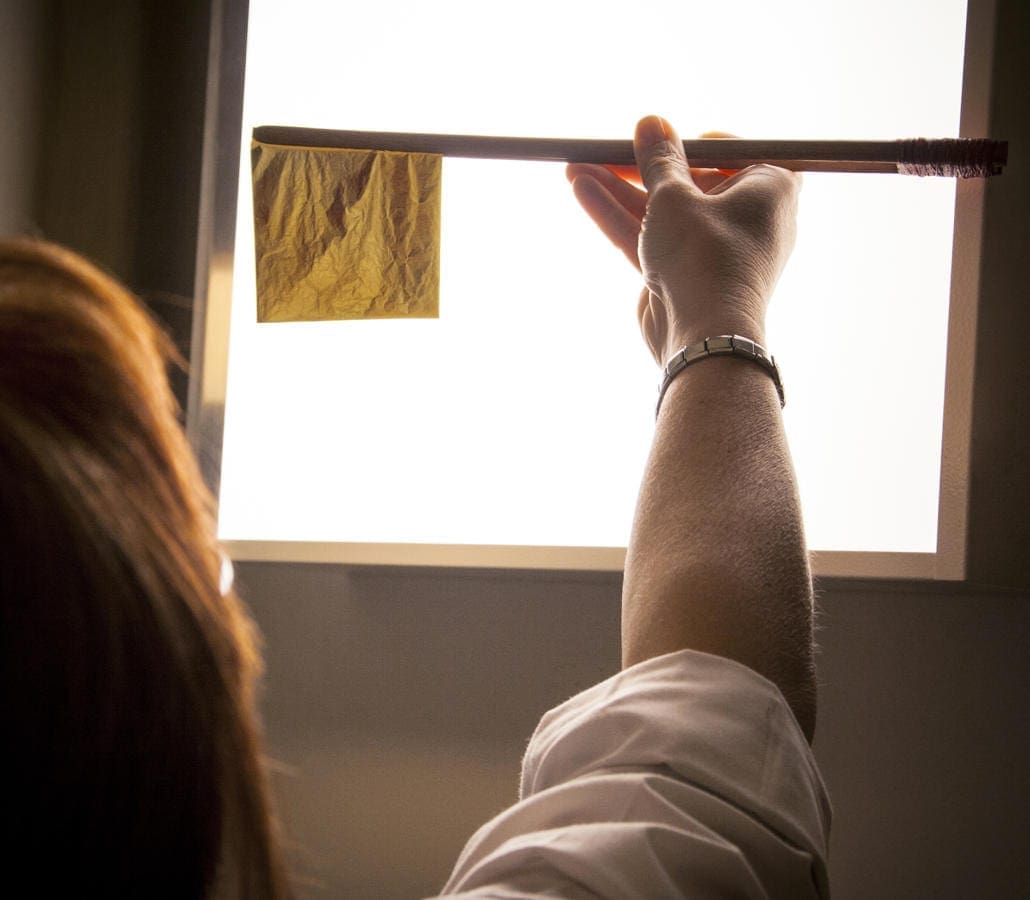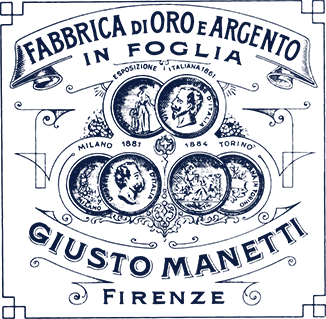- Catalogue
- EShop
- About us
- Gallery
- Gilding Academy
Home
1
About us
2
Production
3
“We have been producing gold leaf for fifteen generations, with our hands, our heads and our hearts. And even today, when I see glowing fiery gold melting into moulds like a tongue of fire, I still feel the excitement as if it were my first time. That glow represents history that repeats itself. It is the story of a family, a city and a centuries-old craft which, along with the most modern technologies, still employs the same artisan processes that were used thousands of years ago”. Niccolò Manetti
To progressively reduce the thickness of the gold and achieve the miracle of transforming a heavy ingot into extraordinarily thin leaves, five processing steps and ten hours of work are required.
Giusto Manetti Battiloro’s products are melted, rolled, beaten, cut and packaged in Italy, at the company’s headquarters just outside Florence.
Making the alloy
Pure gold is fused with copper, silver and other noble metals at a temperature of over 1000°C. It is during this stage that we scrupulously follow ancient recipes and carefully choose the percentages of the precious metals that are used in order to determine the colour of the finished product. There are 35 colour variations in the catalogue. The various components, mixed and melted, will form the alloy which, after being cast into moulds and cooled, creates an ingot.
making the alloyLamination
Reducing the thickness of the ingot is performed through a rolling process that is divided up into two stages. In the first stage, called “roughing”, the ingot passes several times through the rolling cylinders and becomes a strip that is a few tenths of a millimetre thick. The second stage is called “finishing lamination”, where the thickness is further reduced with several cold rolling cycles alternated with annealing cycles, which are essential to reduce the internal tensions of the processed metal. At the end of this stage, the ingot has already turned into a sheet that is tens of meters long and its thickness can only be measured in microns.
laminationBeating
The thin gold foil is then cut into squares the size of stamps. The gold is inserted between the sheets of a special package of paper called “mould”, which is subsequently subjected to numerous mechanical beating cycles. When the metal is in the beating stage, the kinetic energy of the hammers generates a large amount of specific pressure that makes the gold spread out onto the surface of the papers, further reducing the thickness of the gold. The leaf that is obtained is a few tenths of a micron, so thin as to be semi-transparent. Although sophisticated technologies and state-of-the-art machinery are used in the beating cycle, the finishing process is still carried out entirely by hand. By using a variety of hammers that have different shapes and weights, the craftsman “stretches” the edges to make the surface perfectly smooth.
beatingCutting and packaging
Skilful hands cut the beaten gold into leaf using a special double-bladed knife called a “carretto” and, with the help of wooden pliers, they insert it into the traditional tissue paper booklets. All of the tools that are used during this stage, including the cutting cushion, are hand crafted and faithful to the oldest traditions.
cutting
Quality control
Each stage of production is governed by a strict protocol and accompanied by specific qualitative and quantitative inspections. All process and product tests are carefully recorded to ensure full traceability. The final check is carried out in a specialized department, where expert eyes check the quality of the leaves one by one.
quality control© 2025 GIUSTO MANETTI BATTILORO S.p.A. | P.Iva/VAT 00389280488 - Cookie preferences




